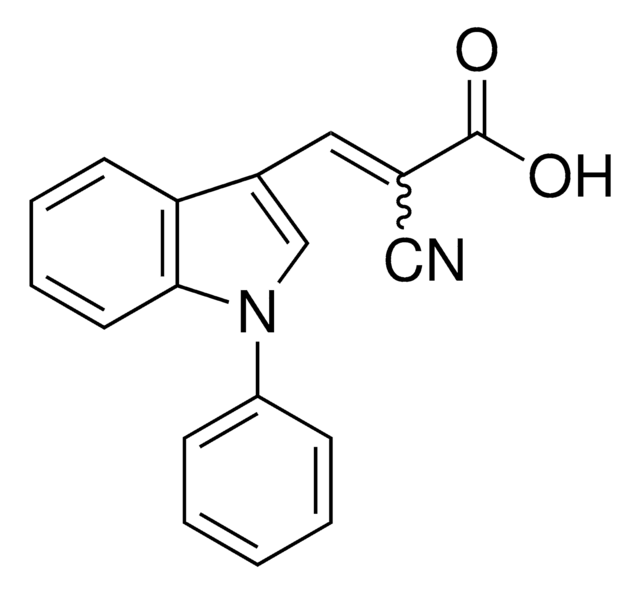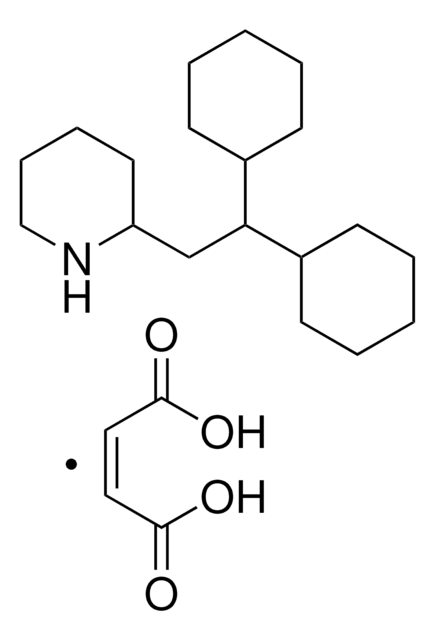PZ0160
UK-5099
≥98% (HPLC), powder, mitochondrial pyruvate carrier inhibitor
Synonym(s):
2-Cyano-3-(1-phenyl-1H-indol-3-yl)-2-propenoic acid, PF-1005023
About This Item
Recommended Products
Product Name
UK-5099, ≥98% (HPLC)
Assay
≥98% (HPLC)
form
powder
color
yellow to tan
solubility
DMSO: >20 mg/mL
storage temp.
2-8°C
SMILES string
OC(=O)\C(=C\c1cn(-c2ccccc2)c3ccccc13)C#N
InChI
1S/C18H12N2O2/c19-11-13(18(21)22)10-14-12-20(15-6-2-1-3-7-15)17-9-5-4-8-16(14)17/h1-10,12H,(H,21,22)/b13-10+
InChI key
BIZNHCWFGNKBBZ-JLHYYAGUSA-N
Related Categories
Application
- as a mitochondrial pyruvate blocker to reduce pyruvate transportation into mitochondria in Roswell park memorial institute (RPMI) 1640 medium for prostatic cancer cell line culture
- in dimethyl sulfoxide (DMSO) stock, to study the effect of inhibiting pyruvate transport into mitochondria on pro-inflammatory responses in lipopolysaccharide activated macrophages
- in topical treatment in order to study its effect on hair cycle induction in experimental mice
Biochem/physiol Actions
Features and Benefits
Storage Class Code
11 - Combustible Solids
WGK
WGK 3
Flash Point(F)
Not applicable
Flash Point(C)
Not applicable
Choose from one of the most recent versions:
Certificates of Analysis (COA)
Don't see the Right Version?
If you require a particular version, you can look up a specific certificate by the Lot or Batch number.
Already Own This Product?
Find documentation for the products that you have recently purchased in the Document Library.
Customers Also Viewed
Articles
n proliferating cells, the cell cycle consists of four phases. Gap 1 (G1) is the interval between mitosis and DNA replication that is characterized by cell growth. Replication of DNA occurs during the synthesis (S) phase, which is followed by a second gap phase (G2) during which growth and preparation for cell division occurs. Together, these three stages comprise the interphase phase of the cell cycle. Interphase is followed by the mitotic (M) phase.
Apoptosis, or programmed cell death (PCD), is a selective process for the removal of unnecessary, infected or transformed cells in various biological systems. As it plays a role in the homeostasis of multicellular organisms, apoptosis is tightly regulated through two principal pathways by a number of regulatory and effector molecules.
Our team of scientists has experience in all areas of research including Life Science, Material Science, Chemical Synthesis, Chromatography, Analytical and many others.
Contact Technical Service













